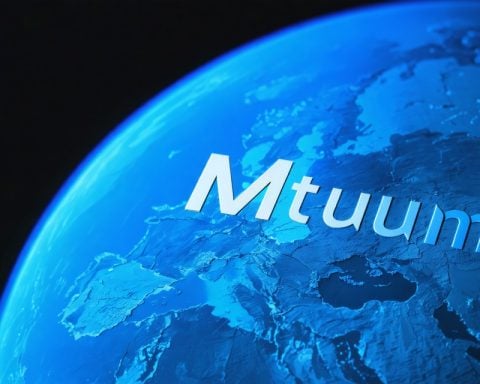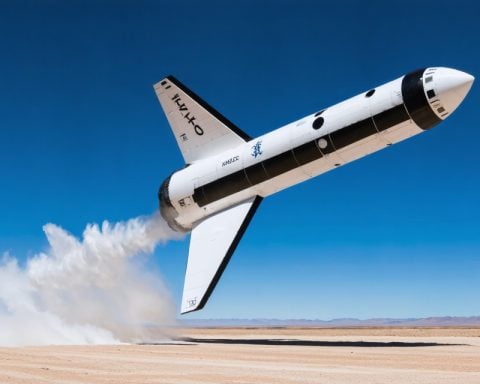- A group of FBI agents is concerned for their future amid rising political tensions under a potential Trump administration.
- These agents, committed to investigating UAPs, fear that their work could be affected by political purges.
- Ryan Graves highlights the atmosphere of uncertainty and collaboration with Americans for Safe Aerospace to enhance aviation safety.
- Political scrutiny is increasing, with fears that FBI agents could face dismissals based on favoritism related to past political actions.
- Transparency in UAP investigations is threatened, impacting the pursuit of credible sightings and national security.
- The fate of those investigating UAPs remains uncertain, with calls for public awareness of the phenomena.
In a startling revelation, a group of dedicated FBI agents investigating Unidentified Anomalous Phenomena (UAPs) is expressing serious concerns over their future as political tensions heighten under a potential Trump administration. These agents, swamped with worrying reports from the skies, fear that their crucial work might fall victim to a political purge.
Ryan Graves, a former Navy pilot and founder of Americans for Safe Aerospace, underscores the unsettling atmosphere within the agency. He shares that these agents have been collaborating with his organization for over a year, pursuing credible UAP sightings to safeguard national security and aviation safety. Despite their commitment to unveiling the mystery of unidentified objects, the looming threat of dismissal has left them in disarray.
The dark cloud of political scrutiny intensifies as Trump, having previously supported rioters from the January 6 Capitol attack, is now hinting at further influencing who stays and who goes within federal departments. FBI agents involved in those investigations may find themselves in the crosshairs, with many fearing their roles could become targets for political favoritism.
While the ASA is determined to continue its pursuit of the truth about UAPs, they lack access to classified intelligence that could propel their efforts. As the landscape shifts, the key takeaway remains: transparency in UAP investigations is at risk, and the fate of those seeking answers hangs in the balance. As Graves passionately advocates, “Let’s identify what’s in our skies and let the public see the X-Files for themselves.” The question remains—what secrets will remain hidden if these brave agents are silenced?
Unveiling the UAP Mystery: Will Politics Hinder Progress in Investigating Unidentified Aerial Phenomena?
Growing Tensions and Investigative Challenges in UAP Research
As the political landscape shifts, implications for the investigation of Unidentified Anomalous Phenomena (UAP) become increasingly complex. Agents within the FBI, tasked with probing into UAP incidents, express serious concerns regarding their jobs amid fears of political influence affecting their operations. These agents have been on the front lines, collaborating with organizations like Americans for Safe Aerospace (ASA) led by former Navy pilot Ryan Graves to ensure national and aviation safety.
Investigative Climate and Political Scrutiny
The uncertain environment is exacerbated by heightened scrutiny and potential political motivations that may influence the future of UAP investigations. Reports indicate that agents involved in UAP inquiries may face undue pressure as previous political administrations have shown tendencies towards favoritism. This scrutiny raises significant questions about the integrity of investigations moving forward.
Key Insights and Trends
1. Transparency at Risk: The political climate could inhibit the transparency needed for productive UAP investigations, as access to classified intelligence becomes a crucial asset.
2. National Interest: UAP investigations are not just about the phenomena themselves; they are also critical for national security and public safety, particularly in the aviation sector.
3. Proactive Organizations: Groups like ASA are increasingly becoming essential in advocating for clearer findings and public awareness regarding UAP incidents. Their advocacy is critical in maintaining momentum in the face of potential political interference.
Relevant Information and Insights
– Market Forecast: The focus on UAPs is likely to grow, with increased funding and public interest driving future investigations, especially if transparency is prioritized.
– Features of UAP Investigations: Successful investigations into UAPs often rely on collaboration between military, federal agencies, and civilian organizations to gather data and assess the implications of sightings.
– Use Cases: Current UAP inquiry findings are employed to enhance national security strategies, refine airspace regulations, and educate the public about potential threats.
Frequently Asked Questions
1. What are the implications of political pressures on UAP investigations?
– Political pressures can lead to biased outcomes in investigations and may hinder the sharing of information crucial to understanding UAPs. A lack of transparency could result in misinformation being spread among the public.
2. How are organizations like Americans for Safe Aerospace contributing to UAP research?
– Organizations like ASA play a vital role in advocating for transparency and accountability in UAP research by conducting independent investigations and collaborating with former military personnel to ensure a thorough examination of unexplained phenomena.
3. What might be at stake if UAP investigations are compromised?
– Should UAP investigations be politicized, there is a risk of critical data being withheld from both the public and security agencies, potentially jeopardizing national safety and limiting understanding of aerial threats.
For further insights into the ongoing discussions about UAPs and national security, visit FBI.









